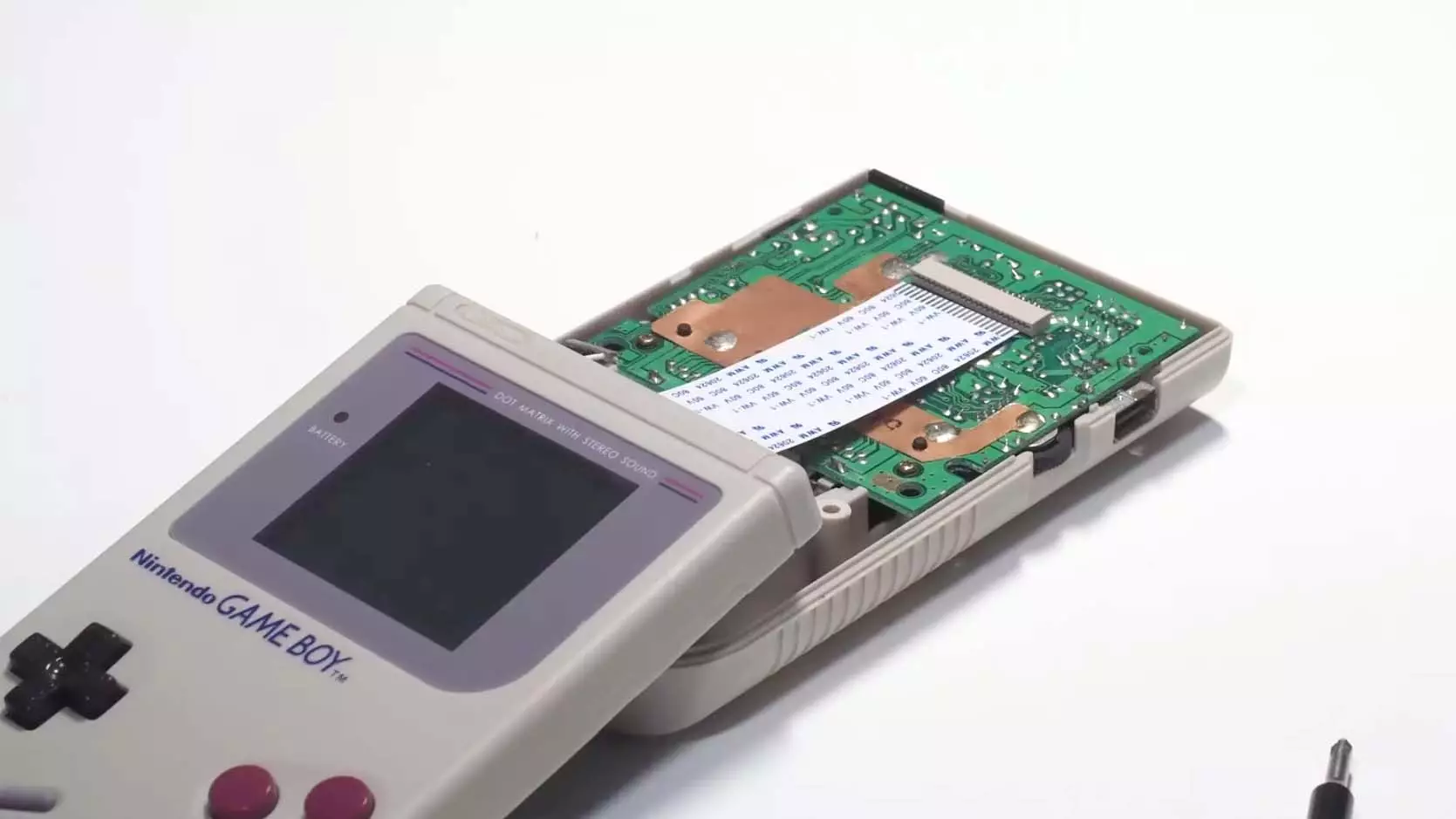In the world of gaming, nostalgia plays a potent role, often leading enthusiasts to seek innovative ways to revive and enhance classic consoles. The Game Boy, particularly the original DMG-01 model, has maintained an enduring place in the hearts of gamers since its release. However, as technology continues to advance exponentially, the need for modern refinements to these classic devices becomes apparent. Consequently, projects such as the Open DMG Display offer an exciting glimpse into how retro devices can be reimagined while still retaining their original charm.
A New Way to Experience the Classic
Tobi’s endeavor to upgrade the Game Boy’s screen signifies more than just a technical upgrade; it’s a resurgence of creativity that champions DIY culture. Utilizing the RP2350B microprocessor, or the Pi Pico 2, Tobi pushes the boundaries of what can be achieved within the compact confines of the Game Boy. This transformation not only enhances the visual experience but also makes it accessible for more hobbyists to explore electronics.
It’s an impressive feat to maintain a device’s iconic form while imbuing it with such enhanced capabilities. Tobi’s project seems to echo the spirit of innovation that originally fueled the gaming industry itself—taking something beloved and using modern technology to breathe new life into it.
The Precision of the Process
Soldering components onto a board may seem daunting, especially for those without extensive experience in electronics. However, Tobi’s method presents a practical approach that simplifies the process. By employing a USB-powered hotplate to conduct the soldering, he transforms what often feels like an intricate dance of hand-eye coordination into a manageable task. His technique of stabilizing components and using heat to create seamless connections exemplifies how modern tools can aid creators in executing precise work.
Even more remarkable is Tobi’s transparency regarding the resulting product. By acknowledging the occasional misalignment and messiness of his work, he creates an authentic portrayal of the hobbyist experience. Perfection is not the goal; rather, it’s about achieving functionality and embracing the learning process. This honesty fosters a welcoming atmosphere, encouraging others to embark on their electronics journeys without the fear of imperfection.
The Accessibility of DIY Upgrades
Affordability is a key element in Tobi’s project, highlighting that one does not need to invest heavily in tools or components to achieve spectacular results. By sourcing economically viable elements, he democratizes the upgrade process, allowing a wider audience to engage in and enjoy similar projects. In an age where many might feel intimidated by the prospect of electronics, Tobi’s approach creates an opportunity for intimacy and connection with technology—a bridge back to the days of simpler gaming.
Moreover, the prospect of not only upgrading a device but also creating games for it without advanced coding skills resonates with many tech enthusiasts and aspiring game developers. This empowers individuals, turning passive consumers into active creators, which could potentially spark a new wave of creativity in gaming.
The Future of Retro Gaming
As the world increasingly turns toward digital devices, Tobi’s project serves as a poignant reminder that some legacies are worth preserving. The blend of old and new technologies represents a bridge that can lead to innovative gaming experiences—blending nostalgia with the conveniences of modern capabilities.
With gaming consoles becoming ever more complex and expensive, the idea of crafting a home-made upgraded Game Boy may become appealing to many, particularly those who are skeptical about upcoming systems like the Switch 2. Tobi’s project not only champions the spirit of DIY hacker culture but also opens doors for creative exploration and personal satisfaction.
Ultimately, the path Tobi has paved might very well inspire a new generation of DIY enthusiasts, proving that with a bit of passion, creativity, and accessible tools, the world of technology is ripe for exploration and reinvention.

